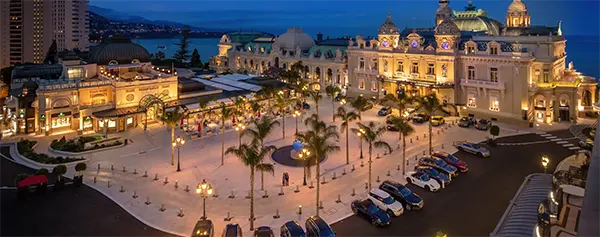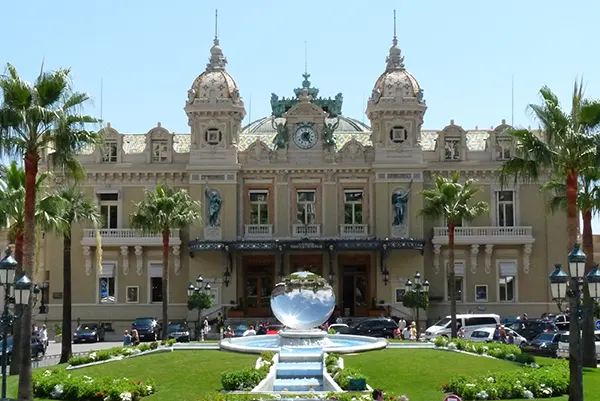
The Legend of Casino de Monte-Carlo: From Royal Origins to Modern Prestige
Casino de Monte-Carlo, nestled in the heart of Monaco, is one of the most iconic gambling establishments in the world. Its legacy intertwines royalty, architecture, and high society, standing as a symbol of glamour and sophistication. Since its inception in the 19th century, the casino has been more than just a gaming destination – it has played a pivotal role in shaping Monaco’s economy and cultural identity.
Historical Origins of Casino de Monte-Carlo
The idea of a casino in Monaco was first proposed in the mid-1800s when the ruling Grimaldi family faced financial hardship. Princess Caroline, the wife of Prince Florestan I, was instrumental in convincing the royal court to authorise the creation of a gambling institution. The casino was established in 1863 and managed by François Blanc, a visionary entrepreneur who previously worked at the Bad Homburg casino in Germany.
Blanc saw Monaco’s potential as a luxury destination for Europe’s elite and invested in infrastructure, roads, and railways to attract wealthy visitors. The success of the casino soon turned Monaco into a tax-free haven for the affluent, bolstering its reputation as a playground for the rich and powerful.
By the end of the 19th century, Casino de Monte-Carlo had already become a beacon of European elegance, boasting the Belle Époque architecture designed by Charles Garnier, also known for the Paris Opera House. The aesthetic charm combined with exclusivity cemented its place as a cultural landmark.
Monaco’s Royal Involvement and Casino Evolution
Throughout the 20th century, Monaco’s ruling family maintained a close relationship with the casino. Prince Rainier III modernised the state’s policies and actively promoted Monaco as a global tourism destination, with Casino de Monte-Carlo as its crown jewel. The close affiliation with the royal house helped maintain the casino’s image of prestige and exclusivity.
Notably, the casino has appeared in various films and literature, further solidifying its cultural significance. From James Bond’s “Never Say Never Again” to the pages of Ian Fleming’s novels, the setting provided a dramatic backdrop for high-stakes intrigue and romance.
Today, while the casino still draws high rollers, it also attracts tourists curious to glimpse the glamour of European aristocracy. The building remains under the operation of Société des Bains de Mer (SBM), which also manages nearby luxury hotels and spas.
Modern Features and Gaming Experience
As of February 2025, Casino de Monte-Carlo continues to offer a mix of traditional elegance and contemporary gaming. The casino houses a wide selection of table games, including roulette, blackjack, baccarat, and poker, alongside modern slot machines equipped with digital features. The environment is curated to provide an immersive and refined experience without compromising on comfort or innovation.
The casino enforces a formal dress code in select rooms, maintaining a classic atmosphere that pays homage to its royal roots. Visitors can enter several gaming salons, each decorated with ornate chandeliers, frescoes, and gilded accents that reflect the Belle Époque era.
Despite the evolution of online gambling, Casino de Monte-Carlo has remained competitive by integrating digital solutions such as interactive kiosks, multilingual support, and efficient payment systems. These advancements ensure a seamless experience for international clientele.
Responsible Gambling and Ethical Practices
The management at Casino de Monte-Carlo has embraced responsible gambling principles, offering assistance and resources to guests who may face gambling-related difficulties. Trained staff are available to provide confidential support, and players can set personal limits to manage their activity.
In accordance with European standards, the casino cooperates with organisations such as GamCare and the European Association for the Study of Gambling. These partnerships reinforce the establishment’s commitment to safe gaming environments.
Additionally, local Monegasque citizens are not permitted to gamble in the casino, a rule still in effect as of 2025. This policy, instituted by Prince Charles III, was designed to protect the local population while boosting tourism income.

Cultural Impact and Global Reputation
Casino de Monte-Carlo is not only a centre of gambling but a cultural icon frequently visited by international celebrities, politicians, and business leaders. It plays host to annual events such as the Monaco Grand Prix gala, the Monte-Carlo Jazz Festival, and philanthropic banquets, reinforcing its role as a multifaceted institution.
The casino’s architecture and surroundings also make it a favoured destination for photographers, filmmakers, and art lovers. With its prime location near the Mediterranean coast, it offers spectacular views and a serene atmosphere.
In recent years, SBM has expanded its influence by collaborating with luxury brands, curating bespoke experiences that blend gaming with high-end dining, wellness, and art. These initiatives have positioned the casino as a lifestyle destination rather than just a gambling hall.
Future Outlook for Casino de Monte-Carlo
Looking ahead, Casino de Monte-Carlo aims to remain at the forefront of luxury tourism. Plans include further digital integration while preserving its historical charm. Advanced data analytics are being introduced to personalise guest services and enhance operational efficiency.
The casino also intends to adopt eco-conscious initiatives such as sustainable energy use and reduced environmental impact of events, aligning with Monaco’s broader green goals. By doing so, the establishment demonstrates adaptability in a changing global landscape.
With its combination of timeless heritage and forward-thinking strategy, Casino de Monte-Carlo remains a benchmark in the world of elite entertainment and culture, continuing to define Monaco’s identity well into the 21st century.
